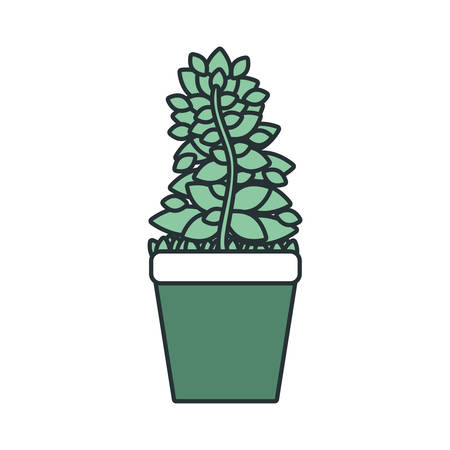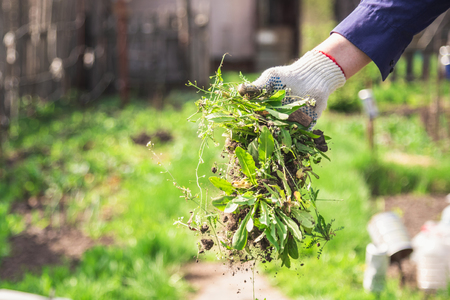1. Planning and Preparing Your Herb Garden
Starting an herb garden is exciting, but success begins with thoughtful planning and preparation. Whether you’re planting in a backyard bed or on a sunny apartment balcony, taking the time to plan properly will help your herbs thrive all year round.
Selecting Herbs That Thrive in Your Region
Different herbs grow best in different climates. Before buying seeds or plants, consider your USDA Hardiness Zone. This helps you choose herbs that are well-suited for your local weather conditions. Heres a quick guide:
| USDA Zone | Recommended Herbs |
|---|---|
| 3-5 (Cold Regions) | Chives, Mint, Thyme, Oregano |
| 6-7 (Moderate Climate) | Basil, Parsley, Sage, Dill |
| 8-10 (Warm Regions) | Rosemary, Lemongrass, Cilantro, Tarragon |
Choosing the Right Containers or Garden Beds
If youre short on space or want more control over growing conditions, containers are a great option. Raised garden beds work well for larger outdoor spaces. Here’s how to decide which is best for you:
| Growing Option | Best For | Pros | Cons |
|---|---|---|---|
| Containers | Small patios, balconies, renters | Portable, better pest control | Dry out faster, limited space |
| Raised Beds | Larger yards, permanent gardens | Good drainage, more growing room | More setup effort and cost |
Preparing Nutrient-Rich Soil
No matter where you plant your herbs, healthy soil is essential. Herbs prefer well-draining soil thats rich in organic matter. Here’s how to prepare it:
If Using Garden Beds:
- Till the top 6–8 inches of soil.
- Add compost or aged manure to enrich nutrients.
- Aim for slightly sandy loam for good drainage.
If Using Containers:
- Use a high-quality potting mix labeled for herbs or vegetables.
- Avoid using garden soil—it can be too dense for pots.
- Add perlite or sand to improve drainage if needed.
A strong start sets the tone for your entire herb-growing journey. With the right herbs for your zone, a good planting setup, and nutrient-rich soil, youre already halfway to a successful herb garden.
2. Planting and Early Care
If youre just getting started with your herb garden, knowing when and how to plant is key to growing healthy, flavorful herbs. Whether youre starting from seeds or picking up seedlings at your local nursery, timing, spacing, watering, and sunlight all play important roles in early herb care.
When to Start Planting
In most parts of the U.S., spring is the best time to begin planting herbs. However, it depends on your USDA hardiness zone. Heres a general guide for common herbs:
| Herb | Start Indoors | Transplant Outdoors |
|---|---|---|
| Basil | 6-8 weeks before last frost | After last frost date |
| Parsley | 8-10 weeks before last frost | 2-3 weeks before last frost (cold hardy) |
| Cilantro | Direct sow outdoors | Early spring or fall |
| Mint | From cuttings or starter plants | After last frost date |
| Thyme | 8-10 weeks before last frost | After last frost date |
Seeds vs. Seedlings: Which Should You Choose?
Seeds: Great for budget-friendly gardeners and those who want a wider variety. Starting indoors gives you a head start on the growing season.
Seedlings: Perfect for beginners who want quicker results without the hassle of germination. Just be sure to harden them off by gradually exposing them to outdoor conditions over 7-10 days before transplanting.
Sunlight Requirements
Most herbs thrive in full sun—about 6 to 8 hours per day. If youre gardening in a hot southern state like Texas or Arizona, a spot with morning sun and afternoon shade can help prevent heat stress.
Watering Tips
Avoid overwatering! Herbs prefer well-draining soil that’s kept slightly moist but not soggy. Here’s a quick guide:
| Herb Type | Watering Frequency (Spring/Summer) |
|---|---|
| Drought-tolerant (e.g., rosemary, thyme) | Once or twice a week |
| Moisture-loving (e.g., basil, parsley) | 2–3 times a week or when top inch of soil is dry |
Spacing Guidelines
Crowding herbs can lead to poor air circulation and diseases. Give your plants room to grow using this chart as a reference:
| Herb | Recommended Spacing |
|---|---|
| Basil | 12–18 inches apart |
| Cilantro | 6–8 inches apart |
| Mints (in containers) | N/A – grows aggressively; keep contained |
| Sage & Thyme | 18–24 inches apart |
A Few Beginner Tips to Remember:
- Label your plants: It’s easy to forget what you planted where, especially when everything starts as tiny green sprouts.
- Avoid fertilizer overload: Most herbs don’t need much fertilizer. Too much can reduce flavor.
- Taking too much at once: Avoid removing more than one-third of the plant at any time. This can stress the herb and slow down regrowth.
- Harvesting from the same spot: Rotate where you harvest from on the plant so it grows evenly.
- Letting herbs flower too early: Once herbs like basil or mint flower, their flavor often changes. Pinch off flower buds when they appear unless youre saving seeds.
- Inspect weekly: Check leaves (top and bottom) for bugs or discoloration.
- Remove affected parts: Trim off any diseased or heavily infested areas.
- Apply organic treatments: Use sprays like neem oil only when needed.
- Tidy up: Clear dead leaves and debris around plants regularly.
- Avoid overcrowding: Thin out dense areas to improve air circulation.
- Trim and Harvest: Give your herbs a light trim to encourage new growth and prevent legginess.
- Clear Dead Leaves: Remove fallen leaves and debris to avoid mold and pests.
- Add Mulch: Apply a layer of mulch around perennial herbs like thyme or oregano to insulate roots against temperature changes.
- Choose Sunny Windowsills: South-facing windows are ideal for maximum light.
- Avoid Drafts: Keep plants away from heating vents or cold windows.
- Pots with Drainage: Ensure containers have holes to prevent root rot.
- Dried Herbs: Tie stems together and hang upside down in a dry, well-ventilated area for 1–2 weeks.
- Freezing: Chop fresh herbs and freeze them in olive oil using an ice cube tray—perfect for soups or sautés.
- Pesto & Infused Oils: Blend basil into pesto or steep herbs in oil for homemade infusions.

3. Monthly Pruning and Harvesting Tips
Proper pruning and harvesting are key to keeping your herb garden healthy, productive, and full of flavor. Each month, you’ll want to check in on your herbs and give them a little trim—not just to keep them tidy, but to encourage new growth and prevent them from going to seed too soon.
When and How to Prune Popular Herbs
Different herbs have different needs when it comes to pruning. Heres a quick guide to help you know what to do each month with some of the most popular kitchen herbs:
| Herb | Best Time to Prune | How to Prune |
|---|---|---|
| Basil | Every 2-3 weeks during growing season | Pinch off the top sets of leaves just above a leaf pair to encourage bushier growth. |
| Mint | Monthly or as needed once its established | Cut stems back by one-third; always trim above a leaf node. |
| Rosemary | Late spring through early fall, monthly light trims | Snip soft, green stems—avoid cutting into woody parts unless shaping. |
Common Harvesting Mistakes to Avoid
Monthly Check-In Tips
Add a reminder on your calendar at the start of each month to walk through your herb garden with scissors or pruners in hand. Look for signs of leggy growth, flowering, or overcrowding. A few snips here and there will go a long way in keeping your herbs lush and flavorful all season long.
Bonus Tip:
If you end up with more herbs than you can use fresh, consider drying or freezing extras for use later. It’s a great way to preserve that peak flavor!
4. Pest Control and Disease Prevention
Keeping your herb garden healthy means staying ahead of pests and diseases before they become big problems. Each month, take time to inspect your plants for signs of trouble. Let’s look at some common pests and organic ways to manage them, along with tips to prevent fungal and bacterial issues.
Common Herb Garden Pests
Herbs can attract a variety of tiny invaders. Here are a few you might spot in your garden:
| Pest | What to Look For | Organic Solutions |
|---|---|---|
| Aphids | Clusters of tiny green or black bugs on stems or leaves | Spray with insecticidal soap or neem oil |
| Spider Mites | Fine webbing under leaves, yellow speckling on foliage | Rinse leaves with water; use neem oil weekly |
| Caterpillars | Chewed holes in leaves, droppings nearby | Handpick; apply Bt (Bacillus thuringiensis) |
| Whiteflies | Tiny white insects flying when disturbed | Yellow sticky traps; neem oil spray |
| Slugs & Snails | Mucus trails; large chunks missing from leaves at night | Use beer traps or diatomaceous earth around plants |
Disease Prevention Tips for Herbs
Watch for Signs Early
Fungal and bacterial issues often start small—yellowing leaves, spots, or moldy patches. Catching these early can save your plant.
Water Wisely
Avoid overhead watering. Water at the base of the plant early in the day so excess moisture evaporates quickly. Wet leaves overnight can lead to fungal growth.
Give Plants Room to Breathe
Crowded herbs trap moisture. Make sure your herbs are spaced properly based on their mature size, and prune regularly to promote airflow.
Rotate Your Herbs Seasonally
If youre growing herbs in raised beds or containers, switch up their locations each season to reduce disease buildup in the soil.
Quick Monthly Checklist:
A little attention each month goes a long way in keeping your herb garden thriving all season long.
5. Seasonal Transitions and Overwintering
As the warm summer days give way to cooler fall temperatures, it’s time to adjust your herb garden care routine. Whether you’re growing herbs outdoors or planning to move them indoors, transitioning properly will help your plants thrive year-round.
Preparing Your Herb Garden for Fall
Many herbs slow their growth as daylight shortens. Heres how to help them adapt:
Bringing Herbs Indoors
If you live in a region with harsh winters (USDA zones 6 and below), consider moving tender herbs indoors. Common candidates include basil, parsley, rosemary, and mint.
Indoor Growing Tips:
Suggested Indoor Herb Growing Conditions
| Herb | Light Needs | Irrigation Frequency |
|---|---|---|
| Basil | 6-8 hours/day | Every 2-3 days |
| Mint | Indirect light | Keep soil moist |
| Rosemary | Full sun (at least 6 hrs) | Once soil is dry |
| Parsley | Bright indirect light | A few times/week |
Preserving Herbs for Off-Season Use
If you don’t plan on growing herbs during winter, preserving them is a great way to enjoy their flavor year-round. Try these easy techniques:
A little planning during the seasonal transition can keep your herb garden productive even when the snow starts falling outside. Whether youre overwintering indoors or preserving your harvest, these simple steps make herb gardening a year-round joy.


